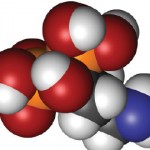These approvals were based on the Phase 3, GO-VIBRANT and GO-ALIVE studies. Both studies were multicenter, randomized, double blind and placebo controlled.
In late October, the FDA approved golimumab to treat adults with active psoriatic arthritis or active ankylosing spondylitis.
GO-VIBRANT examined golimumab in biologic-naive adults with active PsA (n=480). Patients received 2 mg/kg golimumab at Weeks 0, 4 and then every eight weeks, or placebo at Weeks 0, 4, 12 and 20. Placebo-treated patients crossed over to receive golimumab at Week 24. The primary endpoint was achieving an ACR20 response at Week 14.
GO-ALIVE studied 208 patients with AS who received 2 mg/kg golimumab at Weeks 0, 4 and then every eight weeks or placebo at Weeks 0, 4 and 12. In this study, placebo-treated patients crossed over to receive golimumab at Week 16. The Assessment of Spondyloarthritis International Society criteria (ASAS20) response at Week 16 was the primary endpoint.
In GO-VIBRANT, 75% of golimumab-treated patients vs. 22% of placebo-treated patients attained ACR20 at Week 14. In GO-ALIVE, 73% of golimumab-treated patients vs. 26% placebo-treated patients attained ASAS20 at Week 16. Both responses were considered statistically significant.
Ustekinumab Approved for Use in Adolescents with Plaque Psoriasis
Also in October, the FDA expanded the use of ustekinumab (Stelara) to include a new indication: the treatment of adolescents (patients 12 years of age or older) with moderate to severe plaque psoriasis and who are candidates for phototherapy or systemic therapy.3 Ustekinumab is a fully human interleukin (IL) 12 and IL-23 antagonist, which is administered subcutaneously at Weeks 0 and 4, and every 12 weeks thereafter.
This approval is based on data from a Phase 3 study that evaluated the efficacy and safety of subcutaneous ustekinumab in this patient age group. By Week 12 of the study, at least two-thirds of ustekinumab-treated patients reached the primary endpoint, which was the achievement of a Physician’s Global Assessment (PGA) score of 0 or 1, indicating cleared or minimal psoriasis. These results were reached after just two doses were administered, at Weeks 0 and 4.
The safety findings in adolescents were similar to those seen in adult clinical trials for the treatment of plaque psoriasis. R
Michele B. Kaufman, PharmD, BCGP, is a freelance medical writer based in New York City and a pharmacist at New York Presbyterian Lower Manhattan Hospital.
References
- Curtis JR, Chen R, Li Z, et al. The impact of the duration of bisphosphonate drug holidays on hip fracture rates [abstract]. Arthritis Rheumatol. 2017; 69(suppl 10).
- Janssen Global Services LLC. Janssen receives two US FDA approvals for Simponi Aria (golimumab) for the treatment of adults with active psoriatic arthritis or active ankylosing spondylitis. 2017 Oct 20.
- Janssen Pharmaceutical Companies. News release: Janssen announces U.S. FDA approval of Stelara (ustekinumab) for the treatment of adolescents with moderate to severe plaque psoriasis. 2017 Oct 13.


